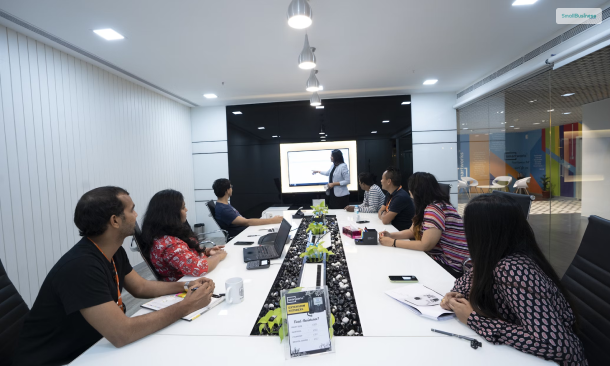Lean startup is a new way of starting a business, and it differs significantly from a traditional startup. If you follow the rules of a traditional startup, it might take you months to draft a business plan and even years to get funding for your business. As a result, when you start offering products and services, the need in the market might fade away. This is where the concept of a lean startup comes to the fore.
In this article, you will learn about the lean startup concept and how it applies to a business. Furthermore, this article will also mention the requirements of a lean startup. Then, you will learn the major lean principles. Finally, you will learn the major applications of the lean methodology. Hence, to learn more, read on through to the end of the article.
What is a Lean Startup?

According to LeanStartup.com, “The Lean Startup provides a scientific approach to creating and managing startups and get a desired product to customers’ hands faster. The Lean Startup method teaches you how to drive a startup-how to steer, when to turn, and when to persevere and grow a business with maximum acceleration. It is a principled approach to new product development.”
The term took off after the launch of the book of the same name in 2011 by Eric Reis. The concept talks about a new approach to building a startup. Basically, this concept says that entrepreneurs must investigate, try new things, test, and iterate operations while developing products/services for the market.
You can use the same principles to find a new company or introduce a product/ service through an already existing company. Here, with the help of the lean startup method, you will be able to develop products that you already know that your customers will like.
Basically, you test an initial version of a product in the market at the start. Hence, you will get an early idea of whether your target customers like the product or not. As a result, there will be an already existing market as soon as you launch your product. Here, you are not relying on the long development of the product. Therefore, you don’t need to hope for its performance after the demand in the market increases.
What are the Requirements of a Lean Startup?

According to Investopedia, “The lean startup method considers experimentation to be more valuable than detailed planning. Five-year business plans built around unknowns are considered a waste of time, and customer reaction is paramount. Instead of business plans, lean startups use a business model based on hypotheses that are tested rapidly. Data does not need to be completed before proceeding; it just needs to be sufficient.”
However, if your customers do not react as you desire them to, you will be able to adjust the limit of your startup. Hence, you will be able to limit the losses. Also, you can return to the development of products that your customers really want. This will thus give you entrepreneurial agility as well. Basically, you are using a failure to make changes faster rather than wait for your product to create demand in the market.
Furthermore, with the help of the lean method, you can test your product hypotheses as you engage with your target customers, partners, and purchasers. Thus, you will be able to learn from their reactions and make changes in your business. These small changes that you are making are called iterations. However, if you make a large change, it is called a pivot.
What are the Principles of a Lean Startup?

The following are the five major principles of a lean startup that you need to learn:
1. Entrepreneurs are everywhere
According to this principle, entrepreneurs do not need to start their business in a garage or a shop. They can start their business anywhere and anytime.
2. Entrepreneurship is management
It says that a startup is not only a product or a service but a human institution as well. This latter part helps the business to scale and achieve long-term success. Hence, it is essential for the business to specialize and work in this area.
3. Validated learning
Sustainability and long-term success are the main goals of a startup. A startup should not merely develop products and serve the interests of customers.
4. Innovation accounting
To ensure better outcomes for the business on the entrepreneurial front, it is essential for the business to focus on these questions:
a. How do you measure progress?
b. How do you set up milestones for the business?
c. How can you prioritize work?
5. Build-measure-learn
The main focus of a startup should be to convert the idea into products and the way in which the target customers respond to the products. Hence, you will be able to learn whether you need to pivot or make small iterations. Therefore, you must gear your startup processes to get feedback from your customers.
Application of the Lean Methodology

Investopedia states – “The lean startup method is not to be used exclusively by startups. Companies such as General Electric, Qualcomm, and Intuit have all used the lean startup method; GE used the method to develop a new battery for use by cell phone companies in developing countries where electricity is unreliable.”
Furthermore, there are also big applications of lean in government. Here, the government focuses on governing and serving its citizens while continuously improving its service delivery. Meanwhile, it is cutting “wastes” and “inefficiencies” at the same time.
Hence, this results in better overall services and better administration. In this situation, civil servants are more engaged in serving the citizens. Apart from that, using lean methodologies, there are more values for tax-supported programs.
In addition to that, there has also been a rise in the adoption of lean in cybersecurity roles. This helps to bring out a variety of advantages, which helps to improve the defense of the organization against a variety of cyber threats.
Moreover, the leaders of the organization can also create better security for the organization and be more proactive with defense.
Stages of the Lean Startup Model

The following are some of the major stages of the lean startup model that you to work with:
1. Business Model Canvas
It consists of nine building blocks that are helpful for you if you want to create or redesign your business. Here, you will have to analyze these building blocks for your business and consider how each of these blocks relates to your business idea. Hence, you will be able to develop assumptions about each idea. The following are the nine blocks:
- Customer segments
- Value proposition
- Revenue streams
- Channels
- Customer relationships
- Key activities
- Key resources
- Important partners
- Cost structure
2. Hypothesis Formulation
Here, you will have to develop and categorize your hypothesis into three different categories:
- Desirability: It shows the interest of your target audience in your business idea. Also, this is the most important.
- Viability: It shows whether your target audience is willing to pay enough for the product.
- Feasibility: It will help you to find whether you can complete the project within a fixed time frame.
Hence, these categories will allow you to judge your hypothesis’s strengths.
3. Minimum Viable Product
Basically, in this stage, you build a basic version of your product or create a product that comes with a new feature. Then, you launch the product in the market quickly and start collecting feedback and data from customers.
Although you might have a lot of features in your plan, using this technique helps you find out whether your target customers are really ready for the products. Hence, you are considering the core value proposition for your customers. Also, you can learn what is the minimum that you need to deliver that value.
4. Learning
Once you launch your minimum viable product (MVP), you start gathering the feedback of your customers through surveys and reviews. With the help of the feedback, you can understand whether your initial hypotheses were right or not. As a result, you will be able to make small iterations of your product.
Also, with the help of such information and insights, you can start the build-measure-learn cycle again. Furthermore, you can also consider whether you need to do a pivot or not.
Frequently Asked Questions:
The following are some frequently asked questions to consider:
What Is A Lean Startup?
The lean startup is a method to start a business, where entrepreneurs investigate, experience, test, and make changes to the product with the development of the latter.
What is the Lean Startup Methodology?
The lean startup methodology started during the early 2010s. Before that, lean startup was only a concept.
Is Lean Startup Still Relevant?
The Lean Startup methodology is in its 12th year and is still a powerful framework for all organizations, both startups and established businesses.
The major aspect of a lean startup is its adaptability to validate both products and business models. The focus is on making it relevant in the long run.
What are the Key Principles of a Lean Startup?
Here are the key principles of a lean startup:
- Entrepreneurs are everywhere
- Entrepreneurship is management
- Validated learning
- Innovation accounting
- Build-measure-learn




Leave A Comment